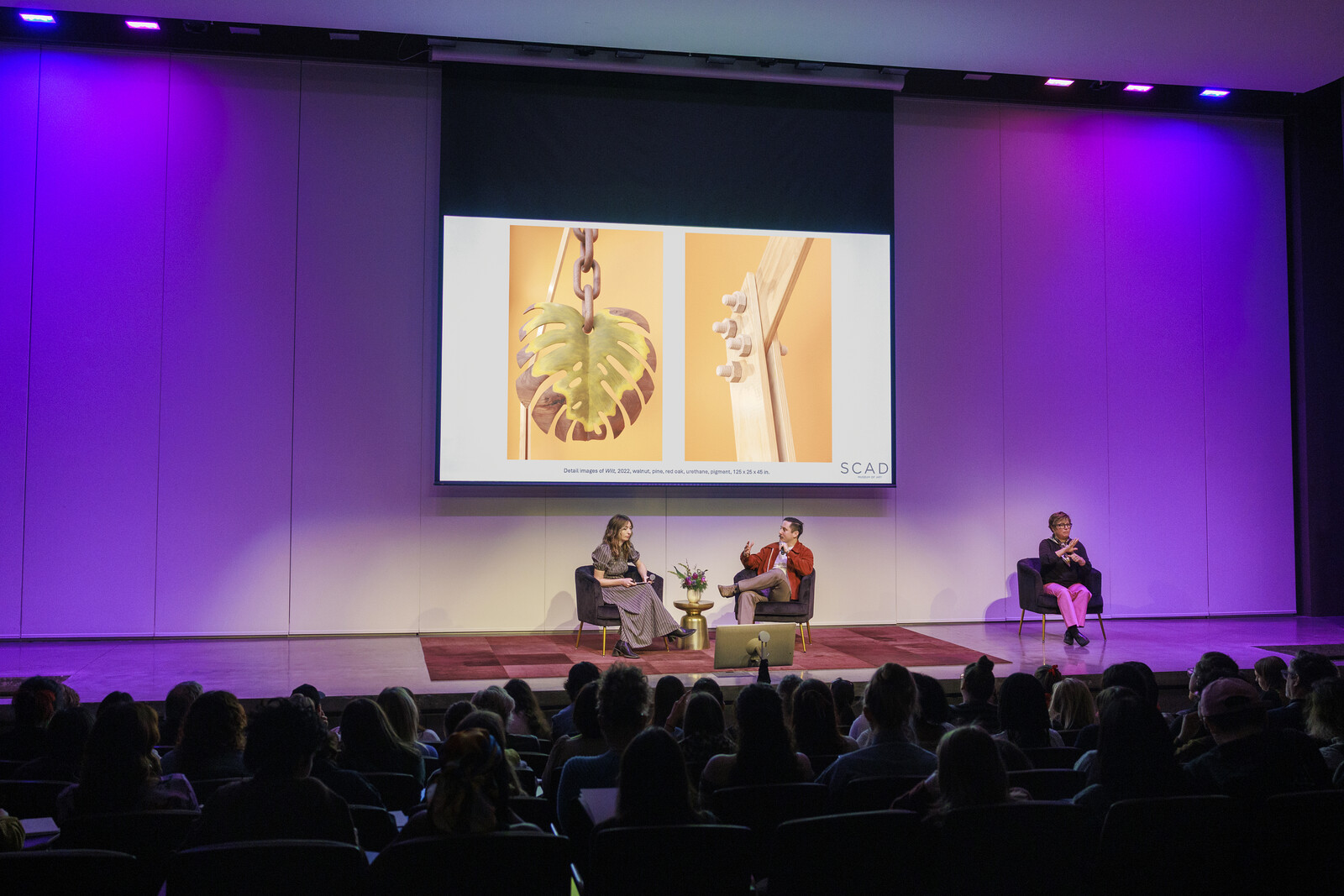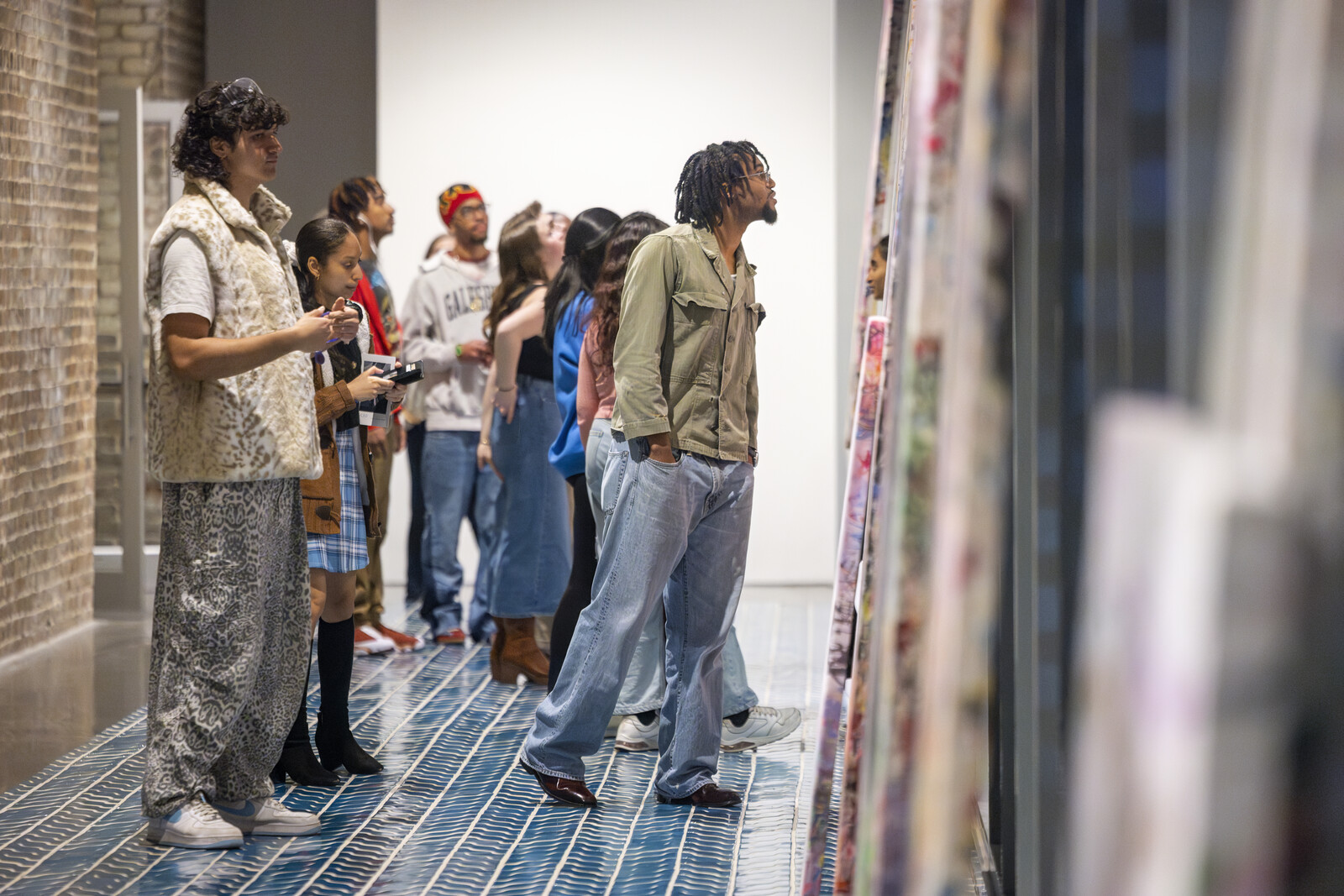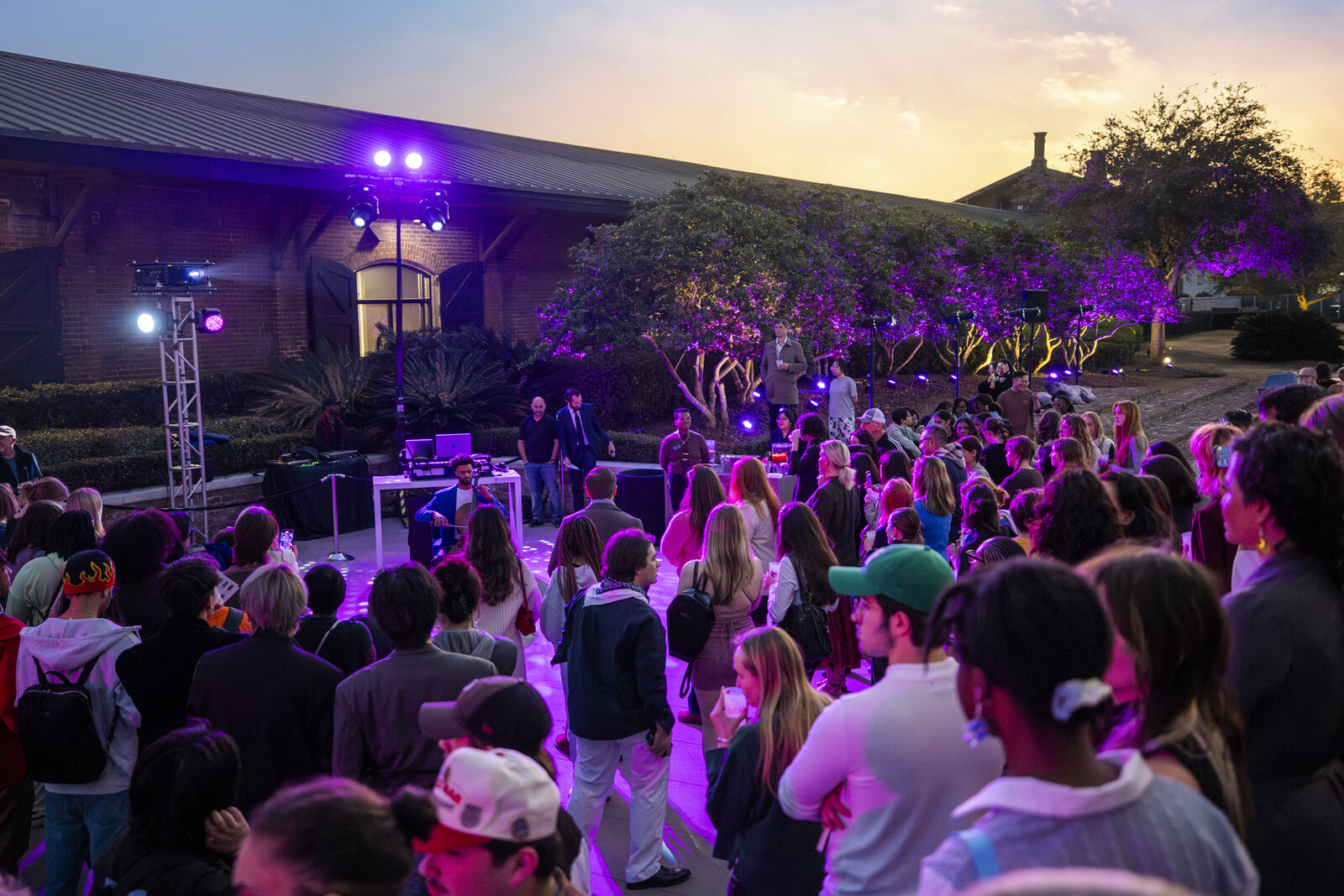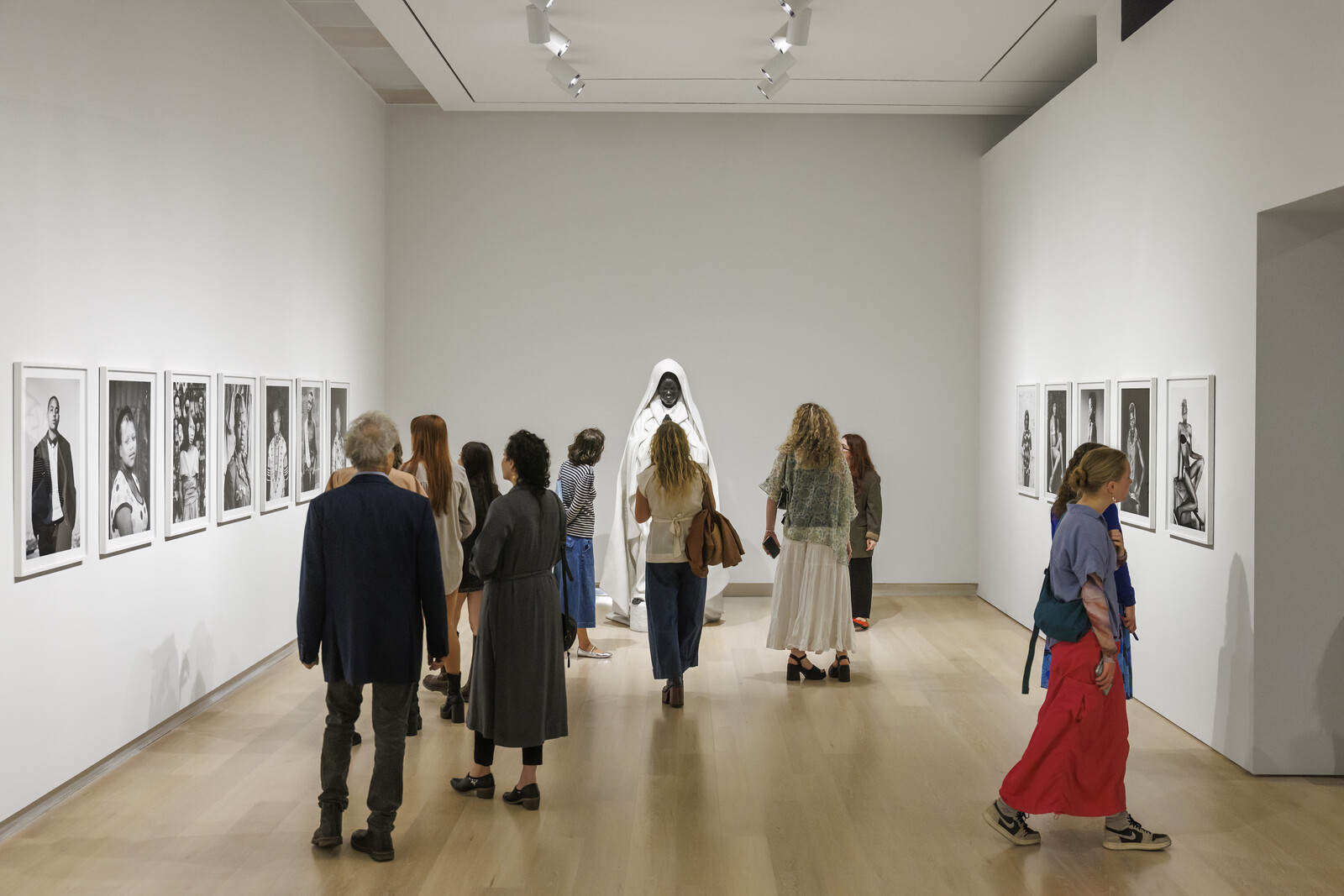http://www.scad.edu/
Facebook / Twitter / Instagram / Youtube
Through the end of May, e-flux Education will focus its coverage on the United States, examining educational institutions in the American South and Southwest in particular. With attention paid to the specificities of each program and its pedagogies, the upcoming features will also consider the surrounding regions’ dense legacies of segregation, slavery, and frontierism alongside more contemporary reformations of schooling, museology, and justice.
Savannah is often referred to as the most haunted city in the United States. But on a temperate Thursday evening in late February, the mood was festive; Savannah College of Art and Design (SCAD) was holding an opening party for deFINE ART, the school’s annual five-day celebration at its expansive museum. Now in its sixteenth edition, deFINE ART 2025 stages artist talks, tours, and lectures, promotes dialogues between artists and students, and honors a prominent contemporary artist, all while unveiling a suite of new exhibitions in the museum’s galleries.
This year, the program honored the South African artist and activist Zanele Muholi, who mounted an eponymous solo show featuring images from their series of self-portraits “Somnyama Ngonyama” (Hail the Dark Lioness) (2014–15), in addition to selected works from “Brave Beauties,” (2014–) and “Faces and Phases,” (2006–2016), both of which portray trans, queer, and gender non-conforming subjects in the artist’s native South Africa and beyond. The high-contrast, black-and-white photographs use classic portraiture methods to showcase contemporary, liberatory notions of gender, queerness, and the pliancy of identity. The city of Savannah and SCAD have committed to similar marriages of history and contemporaneity. They preserve certain histories and heritages, no matter how ghostly, while making concerted efforts to keep apace with the present. SCAD’s facilities spread across the city’s north and south historic districts. Under a canopy of towering oak trees, Gothic revivalist architecture, cobblestone streets, Confederate monuments, and Italianate mansions commingle with newer, more modernist buildings. Many of the older edifices date back to the Civil War.
The first building that SCAD acquired after its founding in 1978 was an old armory on Bull Street, which bifurcates the historic districts. Though concentrated in this area, SCAD has a portfolio of around 100 properties across Savannah, which they use as student housing, classrooms, and various production facilities; the school also has campuses in Atlanta and Lacoste, France. It has cultivated a substantially larger endowment than the Rhode Island School of Design, the School of the Art Institute of Chicago, and the California Institute of the Arts, and boasts a net worth that exceeds $1.5 billion. The school achieves this feat partly through its nonprofit status and partly by not offering tenure to its professors.1
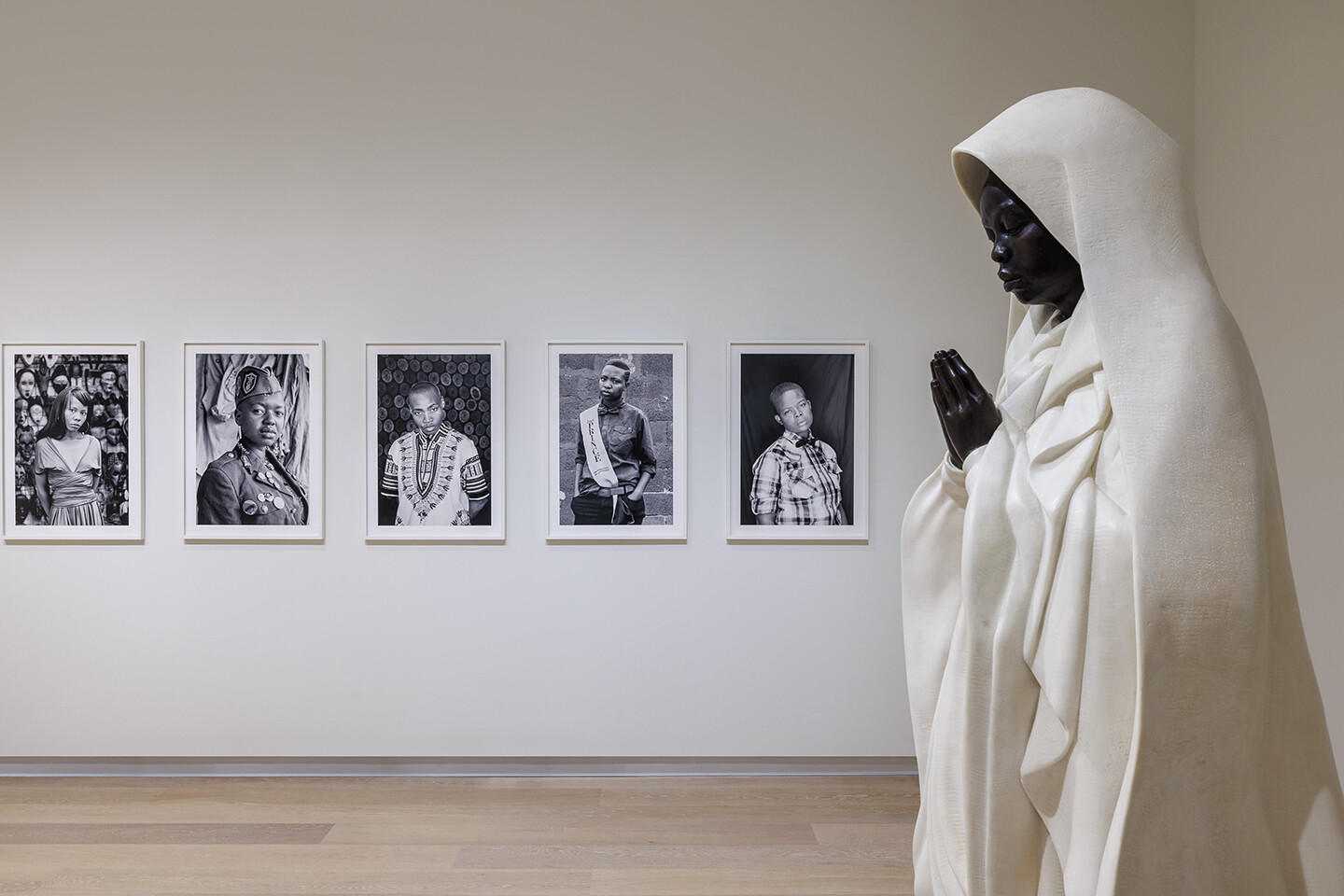

View of Zanele Muholi: ”Zanele Muholi,” SCAD Museum of Art, Savannah, Georgia, 2025.
SCAD’s expansive list of undergraduate and graduate programs includes majors in painting, sculpture, and printmaking, in addition to ones in animation, immersive reality, and industrial design. The school has built am eleven-acre film studio backlot that rivals Paramount’s in Los Angeles, with ersatz New York streets and a forty-foot-tall LED stage. The art school’s athletics program is nationally competitive; its men’s and women’s bowling teams each won their national championship in 2024, as did the equestrian team, taking home their fourth Collegiate Cup in the past ten years.
Among its many facilities is the SCAD Museum of Art, a striking, sprawling institution that opened in 2011. The museum occupies a former railway depot; modernist concrete and glass additions have been made to the building’s original nineteenth-century brickwork, uniting the district’s dual sensibilities under one roof. Its refabrication reflects the museum’s chiefly pedagogical purpose: classrooms fill the building’s upper floors, student docents lead museum tours, and the collection includes 4,500 works. It also stages significant shows by an international group of distinguished artists, such as Cao Fei, Dan Flavin, and Nari Ward.
At deFINE ART’s opening, throngs of students scurried around the fresh exhibitions, talking heatedly about the work on view, gossiping amongst themselves, and asking the featured artists in attendance for selfies. As I watched the students take part in the festivities, I realized that this school was not only preparing them with studio skills but also acculturating them for openings and the arcane rituals of the art world. SCAD places students in the same room as renowned artists, curators, and collectors. The museum’s robust program and its methods of fostering these exchanges between exhibiting artists and students stand out as among SCAD’s greatest educational assets.
Amidst the chaos of the opening, I ducked away to speak with several of deFINE ART’s exhibiting artists in one of the museum’s empty classrooms. Each of these conversations reminded me of the magic of certain types of schooling, that Aristotelian ideal of peripateticism—thinking deeply and together; traversing different ideas, feelings, and landscapes across a boundless intellectual and creative landscape.One of the artists who debuted a solo exhibition during deFINE ART is Raul De Lara, a sculptor based in New York. Raised in Sinaloa, Mexico, De Lara makes everyday, slightly anthropomorphic objects, mostly from wood. He explained his love for quotidian items, such as houseplants, chairs, and shovels: “They’re there to witness our lives—the good parts, the bad parts, the shitty ones and the sexy ones. They’re always watching you.” His exhibition, titled “Raíces/Roots,” reflects a practice steeped in memories of his childhood hometown. Como Las De Mi Tierra / Like The Ones Back Home (2024), his wooden sculpture of a large, potted monstera resting on a stool, sits in a glass vitrine attached to the museum’s exterior.
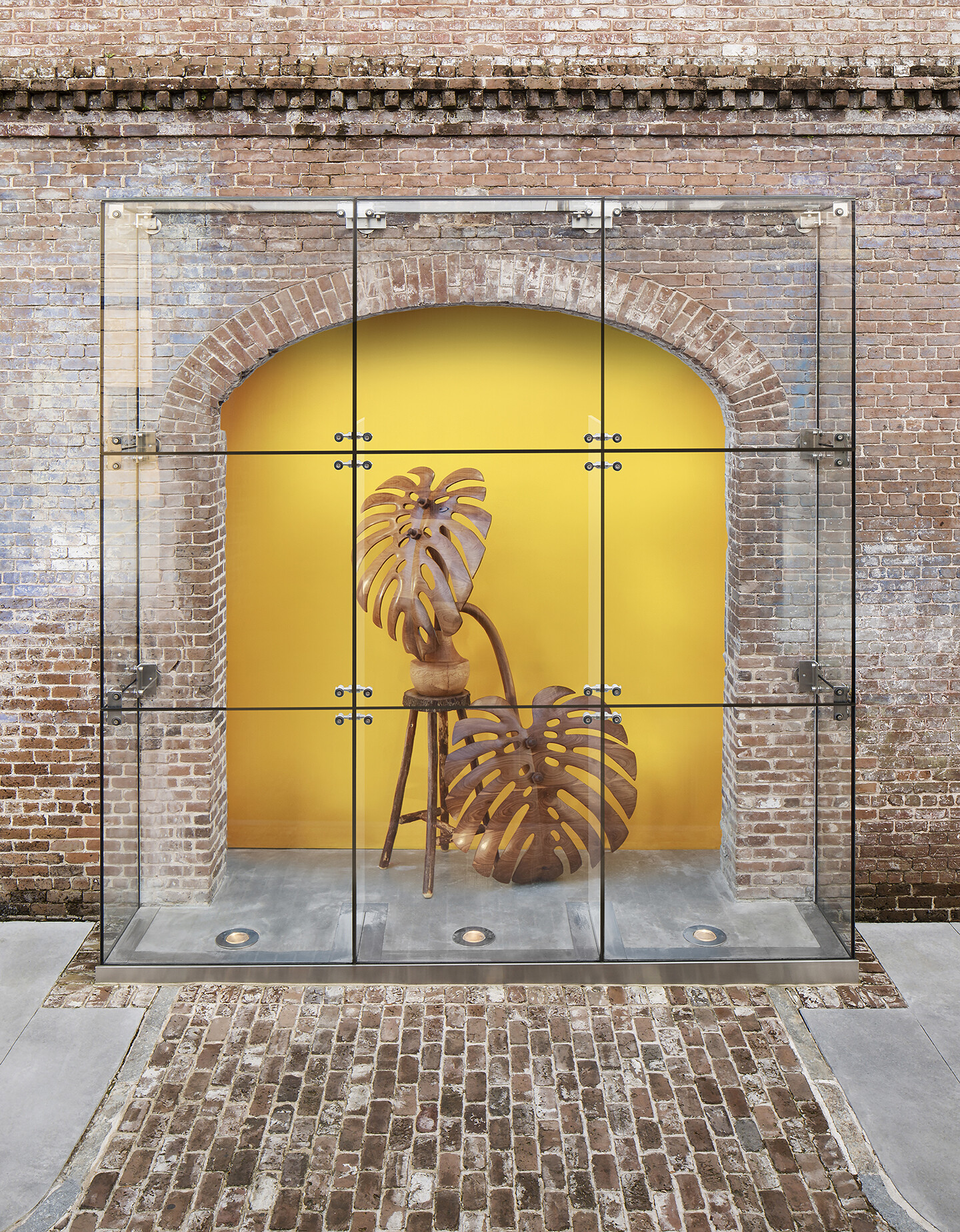

Raul de Lara, Como Las De Mi Tierra / Like The Ones Back Home, 2024. Installation view, Raul de Lara: Raíces/Roots, SCAD Museum of Art, Savannah, Georgia, 2025.
After emigrating to the US, De Lara could not freely travel outside the country until his DACA application was approved. Twenty years after leaving Mexico, he was finally able to visit for the first time in order to see his dying grandmother. Como Las De Mi Tierra is a recreation of many of the monstera plants he saw in his family’s neighborhood, and he sees its cracked pot as an embodiment of an inability to grow roots—but also imminent growth. We spoke about another sculpture of his, The Wait (2021), a chair with a very spiky cactus as a seat. It “references growing up as a Catholic kid in a place that hated me for being left-handed,” De Lara said. “Every morning I would go to class, put my left hand on the desk, and get hit with a ruler.” His experiences in both the US and Mexico have impacted his ultimate aims: “My art, the way I want to use it, is to be within the world, and not just a product that’s for sale.”
Amid the deFINE ART festivities, students walked a bit more solemnly through British-Caribbean artist and designer Samuel Ross’s exhibition “HEAVE,” comprising sculptural garments, paintings, and benches installed in a dark-blue room. Hanging from heavy cables, three utility jackets, slightly puffy with the airs of post-industrial affluence, were smudged gesturally with paint. His abstract paintings contain ash from the 1972 eruption of La Soufrière volcano on the Caribbean island of St. Vincent. “My great uncle and aunt caught it in glass jars as it fell down from the sky,” Ross explained.
After graduating with a graphic design and illustration BA from De Montfort, a public university in Leicester, UK, Ross worked as a product designer and then as an assistant to Virgil Abloh. He started his own luxury sportswear label at twenty-five years old and now runs several studios for industrial design, fashion, and art. The benches in his SCAD exhibition merge Western modernism and West African furniture design. They are inscribed with serial numbers, which contributed to the ominous energy in the room. I told Ross that the numbers reminded me of those implemented under slavery and the Holocaust. Ross pondered: “What would the hieroglyph of the past 300 or 400 years be? It would probably be the barcode, and the ambiguity of it being applied to bodies and materials.”
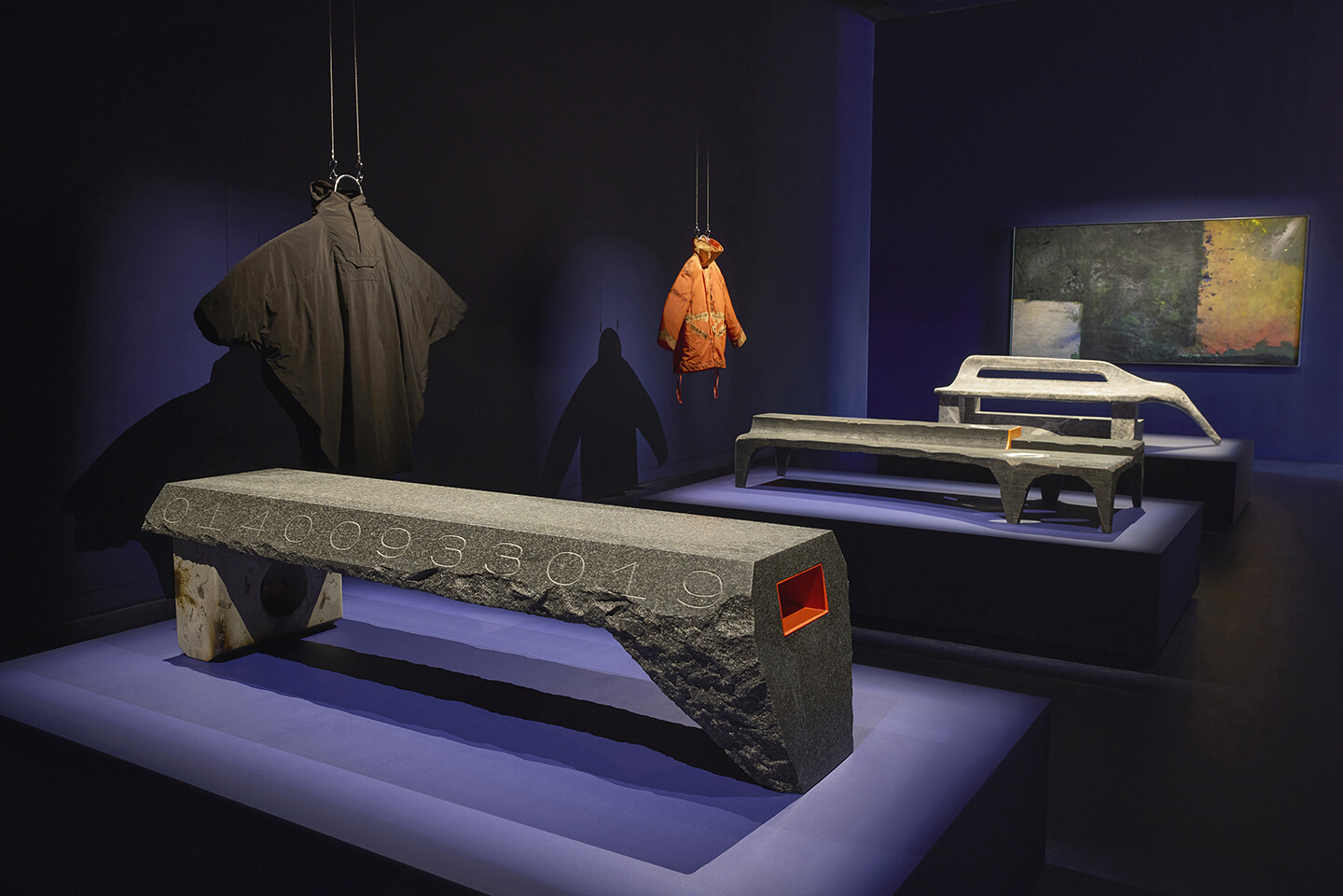

View of Samuel Ross: “HEAVE,” SCAD Museum of Art, Savannah, Georgia, 2025.
Back in September of 2023, I was fortunate to see the Brooklyn-based artist Sarah Crowner’s turquoise floor tile installation Platform (Blue Green Terracotta for JC) (2022) on the Chinati Foundation’s scrubby blond desert property in Marfa, Texas. deFINE ART debuted Crowner’s latest tile work, Platform as Platform (2025), for which the artist laid nearly 230 feet of terracotta tiles—bluish-greenish, wavy, modernist—on the floor of a long hallway in the museum. These tile “paintings” are meant to be walked on. The massive site-specific work, made in collaboration with Cerámica Suro in Guadalajara, consists of a couple of tons of material. It’s not possible for the thing to be moved; it will have to be sliced up, then repurposed.
“When I started making these,” Crowner says, “I was asking myself: can something be ephemeral but also architectural?” Walking on the art changes the experience. “In an art context, so often, we’re bombarded with things to see, we kind of lose our sense of groundedness,” she elaborated. “I wanted to push that—I wanted to remind you that you are a body in space.” For Platform as Platform, Crowner also made student and faculty labor a salient feature of the work, stretching drop cloths from SCAD’s screen-printing lab onto frames and placed them atop the tiles, leaned against the gallery’s wall.
The Los Angeles-based artist Ken Gun Min’s painting, Memories of Dandelion (2023), on view in his exhibition “The vastness is bearable only through love,” depicts a swirling, psychedelic arrangement of fauna, a small rainbow, and waterfall under a red sun. On the ground lies a disemboweled tiger, its innards adorned in colorful beads and jewels. The painting reflects on the waves of Black, Korean, and Hispanic immigration to Central Los Angeles and the racial tensions and oppressive police presence that accumulated in the neighborhood as it evolved into Koreatown. The tiger references not only P-22—the famed mountain lion who lived in Griffith Park—but also the mascot of the 1988 Seoul Olympics. Min, who grew up in Seoul, was among the many children taken out of class and required to train and perform in that year’s opening ceremony. “Some people read [the painting] only as abuse of the animal, but to me, it’s the showing of the wound,” he clarified. “Embroidery connects private and public, femininity and masculinity. To me, it is a healing and meditation method. It is not curing, but I didn’t just leave the wound open.”
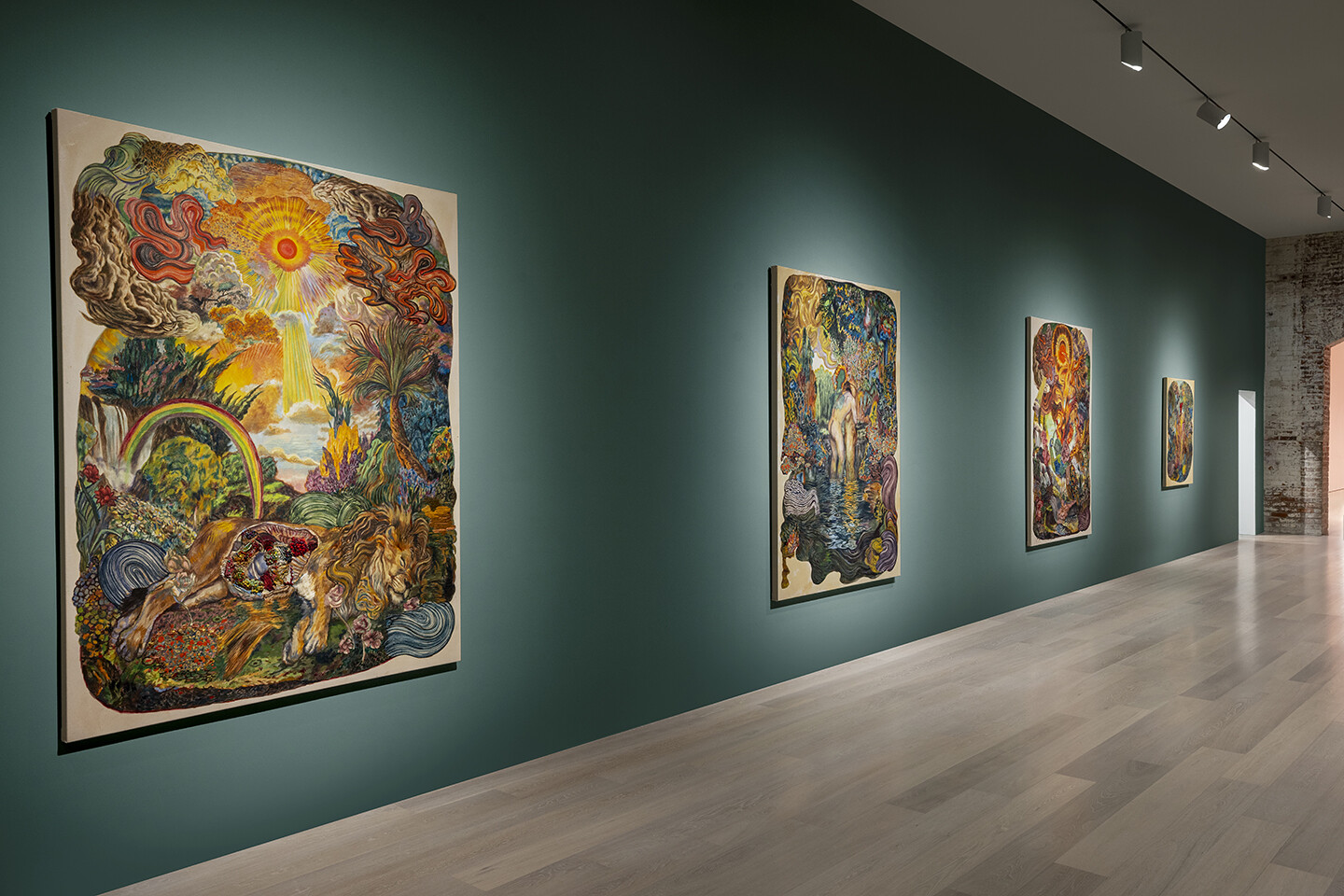

View of Ken Gun Min: “The vastness is bearable only through love,” SCAD Museum of Art, Savannah, Georgia, 2025.
Min and I walked around the opening of deFINE ART together. It struck me that the purpose of deFINE ART is not only to enrich current students’ engagement with the arts, but also to attract prospective students. The roster of artists who have been honored at editions of deFINE ART include Marina Abramovic, Lawrence Weiner, Katharina Grosse, Carrie Mae Weems, and Jorge Pardo. Despite its connections to the art world outside its walls, SCAD seems somewhat isolated from the polycrisis affecting other universities. At the time of writing, ICE is abducting students elsewhere who have engaged in campus protests against Israel’s genocidal war in Gaza, and the Trump administration is sanctioning scores of universities with massive federal funding cuts for purportedly failing to protect students from anti-Semitism (meanwhile, these funds are said to be going to Trump’s American Academy, a “strictly non-political” institution). Though there have been walkouts against the war in Gaza at SCAD, student protesters did not go so far as to occupy buildings. It appears there have not yet been threats of funding cuts. However, US immigration officials did recently revoke a Korean alumni’s student visa, citing a traffic violation for which she had appeared in court and paid the fine four years prior.
There is an amorphous specter of a political consciousness that floats through this year’s edition of deFINE ART. Several of the exhibitions thoughtfully engage histories of oppression, identity politics, and marginalization; taken together, however, they amount to an engaging and variegated but low-risk program. This underscores a larger question that remains unresolved within American art schools: How politically effective can art be when it continues to invoke critiques of power and hegemony while avoiding direct agitation of either? Educational institutions and artists feel all the more pressure to perform this careful dance in an authoritarian climate. Though the spirit of student movements past continues to animate campus protests today, and select universities remain among the few places where progressive politics have become institutionalized in the US, higher education still relies on forms of debt, real estate, and elite patronage. As a school for contemporary creative education in Savannah, SCAD embodies the scholastic tension between preparing students for the world as it is and changing it. The college is lodged between the inescapable past and the demands of the present. A few nights after the deFINE ART opening, a Southern supper was held to celebrate the artists at Gryphon, a restaurant in a beautifully ornate Scottish Rite building from 1926, owned by SCAD. Outside, on a darkened corner of Bull Street, a hearse, converted into a sort of mini, double-decker bus, drove by. Its driver was giving a ghost tour.
Katya Kazakina, “How a Young Woman Built Her Dream Art School Into an $1.85 Billion Empire, artnet, March 31, 2025, →.

